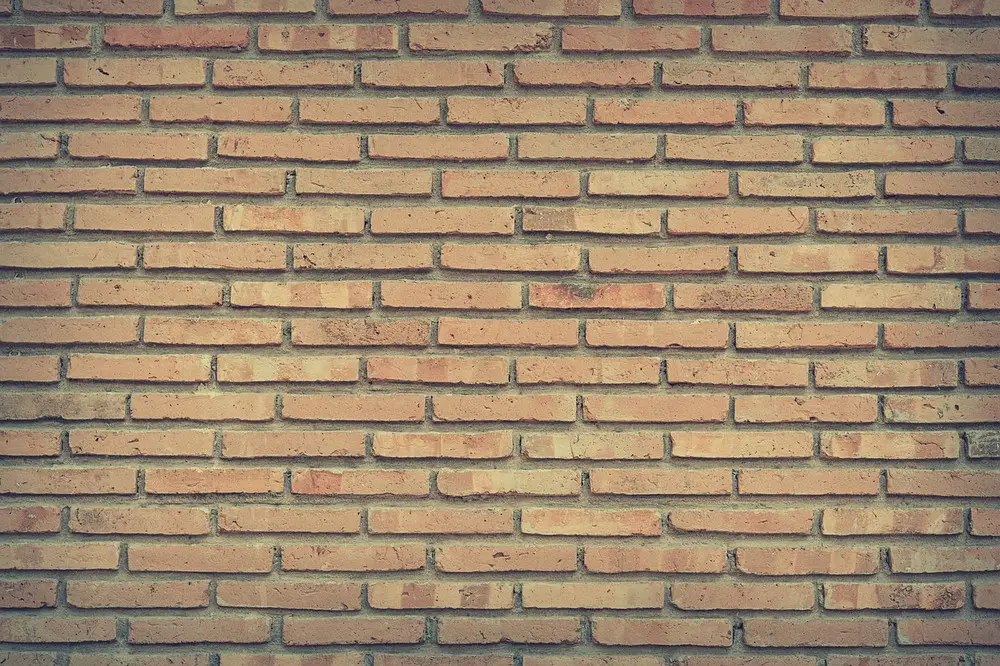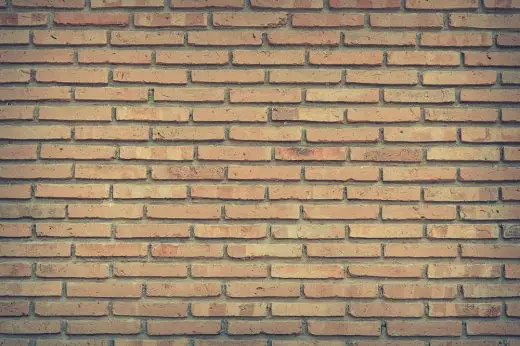Brick walls and sound insulation: how effective are they at blocking noise?, Building walling material tips, Online brickwork advice
Brick Walls and Sound Insulation: How Effective Are They at Blocking Noise?
6 Sep 2023
When creating a peaceful and quiet living or working environment, noise control is critical. Noise pollution from traffic, neighbors, or even your household can be a significant source of stress and discomfort. In this blog post, we will explore the role of brick walls and sound insulation in blocking noise and creating a more serene atmosphere. We will delve into the effectiveness of both methods and help you decide which one might be more suitable for your specific needs.
The clamor of modern life can often seep into our homes and workplaces, disrupting our peace and concentration. This is where the importance of noise control measures, such as brick walls and sound insulation, comes into play. Both have been used for years to combat noise, but how effective are they, and which one should you choose? Let’s find out.
What are Brick Walls?
Brick walls are a common feature in many buildings, celebrated for their durability, aesthetics, and thermal insulation. However, their effectiveness in blocking noise largely depends on their composition, thickness, and construction methods. Let’s break down the factors that contribute to their sound insulation capabilities:
How Effective are the Brick Walls at Blocking Noise?
Brick walls are effective at blocking noise due to their mass and density. Sound waves, which are vibrations in the air, travel through various materials at different speeds. When sound encounters a brick wall, it is partially absorbed by the bricks and then slowed down and reflected, reducing its intensity on the other side. This makes brick walls particularly efficient at blocking high-frequency noise, such as traffic or loud conversations.
However, it’s important to note that brick walls may be less effective at blocking low-frequency noise, like the deep rumble of heavy machinery or bass-heavy music. Additionally, sound can still travel through gaps, cracks, or thin areas in the wall, so proper construction and maintenance are crucial for optimal noise reduction.
What is Sound Insulation?
Sound insulation is a specialized technique that reduces sound transmission from one area to another. It involves adding materials or structures that absorb, reflect, or dampen sound waves. Proper insulation can be applied to walls, floors, ceilings, and even windows, making it a versatile solution for noise control.
How Effective is the Sound Insulation at Blocking Noise?
Sound insulation is highly effective at blocking noise because it addresses the specific sound transmission mechanisms. Sound waves can travel through building components’ air, solid materials, and even vibrations. Rigid insulation materials, such as acoustic panels, foam, and specialized drywall, are designed to absorb and dissipate good energy.
Unlike brick walls, sound insulation materials can effectively block both high and low-frequency noise, making them a comprehensive solution for noise control. They can also be customized to target specific noise sources or areas in a building, providing greater flexibility in noise reduction.
Which is More Effective: Brick Walls or Sound Insulation for Blocking Noise
Choosing between brick walls and sound insulation depends on various factors, including your specific noise problem, budget, and architectural constraints.
Brick Walls
Pros:
- Effective at blocking high-frequency noise.
- Durability and structural integrity.
- Aesthetically pleasing.
Cons:
- Limited effectiveness against low-frequency noise.
- It is costly to retrofit into existing buildings.
Sound Insulation
Pros:
- Highly effective at blocking a wide range of frequencies.
- It can be added to existing structures.
- Versatile and customizable.
Cons:
- It may require professional installation.
- The initial cost can be higher than traditional construction.
In most cases, a combination of both brick walls and sound insulation is the most effective approach. Using brick walls as the primary structure and enhancing them with proper insulation can provide comprehensive noise control.
Exploring Types of Sound Insulation Materials and DIY vs. Professional Installation
Sound insulation is crucial for creating peaceful and comfortable living or working environments. Whether you’re dealing with noisy neighbors, loud appliances, or a home studio, choosing the right sound insulation materials is essential.
We will explore various sound insulation materials and discuss their characteristics, effectiveness, and scenarios where they excel. Additionally, we’ll explore the pros and cons of DIY sound insulation projects versus professional installation.
Types of Sound Insulation Materials
- Acoustic Panels
Acoustic panels are popular for improving room sound quality. These panels are typically made from fiberglass or foam and come in various sizes and shapes. They effectively reduce echoes and reverberations, making them ideal for recording studios, home theaters, and conference rooms.
- Acoustic Foam
Acoustic foam, often seen as egg-crate or pyramid-shaped panels, is lightweight and easy to install. While it’s excellent at absorbing mid to high-frequency sounds, it’s less effective at blocking low-frequency noise. Acoustic foam is commonly used in home studios, podcasting rooms, and spaces with speech-related sound issues.
- Specialized Drywall
Specialized soundproof drywall, such as QuietRock or Green Glue, is designed to block sound transmission through walls. These materials incorporate layers of gypsum and viscoelastic compounds that absorb and dissipate helpful energy. They are perfect for reducing noise between rooms, making them ideal for bedrooms, home offices, and shared living spaces.
- Mass-Loaded Vinyl
Mass-loaded vinyl (MLV) is a flexible material with a high mass, effectively blocking sound. It’s typically used as an additional layer between the existing wall and new drywall. MLV is excellent for reducing airborne and impact noise, making it suitable for walls, floors, and ceilings in apartments, condos, or noisy urban areas.
Highlighting Scenarios
- Acoustic panels excel in rooms where sound quality is essential, such as recording studios and home theaters.
- Acoustic foam is ideal for smaller spaces with speech-related challenging issues or minor noise disturbances.
- Specialized drywall is perfect for homes with shared walls or rooms where you need to reduce sound transmission significantly.
- Mass-loaded vinyl is a practical choice for blocking various types of noise in multi-family residences.
DIY vs. Professional Installation
- Advantages and Disadvantages of DIY
DIY sound insulation projects can save money and offer a sense of accomplishment. However, they may need more expertise for optimal results, and mistakes can lead to ineffective soundproofing.
- When to Hire Professionals
It’s advisable to hire professionals when dealing with complex installations, structural changes, or large-scale soundproofing projects. Professionals have the necessary skills and access to high-quality materials, ensuring a more effective and durable solution.
- Tips for DIY Success
If you choose the DIY route, research thoroughly, follow installation instructions meticulously, and invest in quality materials. Start with smaller projects to gain experience before tackling more extensive, critical sound insulation projects.
The choice of sound insulation materials depends on your specific needs and the characteristics of your space. While DIY projects can be rewarding, complex scenarios often require professional expertise. By understanding the strengths and weaknesses of different materials and considering the scale of your project, you can create a quieter and more comfortable environment for your home or workplace.
Brick Walls and Sound Insulation Conclusion
In the battle against noise pollution, both brick walls and sound insulation play crucial roles. Brick walls offer a solid foundation for noise reduction, particularly for high-frequency noise, while sound insulation materials provide a versatile and effective solution for various noise sources and frequencies.
When considering noise control measures for your home or workplace, assessing your needs, budget, and architectural constraints is essential. In many cases, a combination of both brick walls and sound insulation will deliver the best results, creating a serene and peaceful environment where you can live, work, and relax without the intrusion of unwanted noise.
Comments on this Brick Walls and Sound Insulation: How Effective Are They at Blocking Noise? article are welcome.
Brick
Bricks
The evolution of brick and mortar designs in NZ
Can brick slips be used externally guide
2021 Brick in Architecture Awards
Building Articles
Residential Architecture
Comments / photos for the Brick Walls and Sound Insulation: How Effective Are They at Blocking Noise? page welcome






